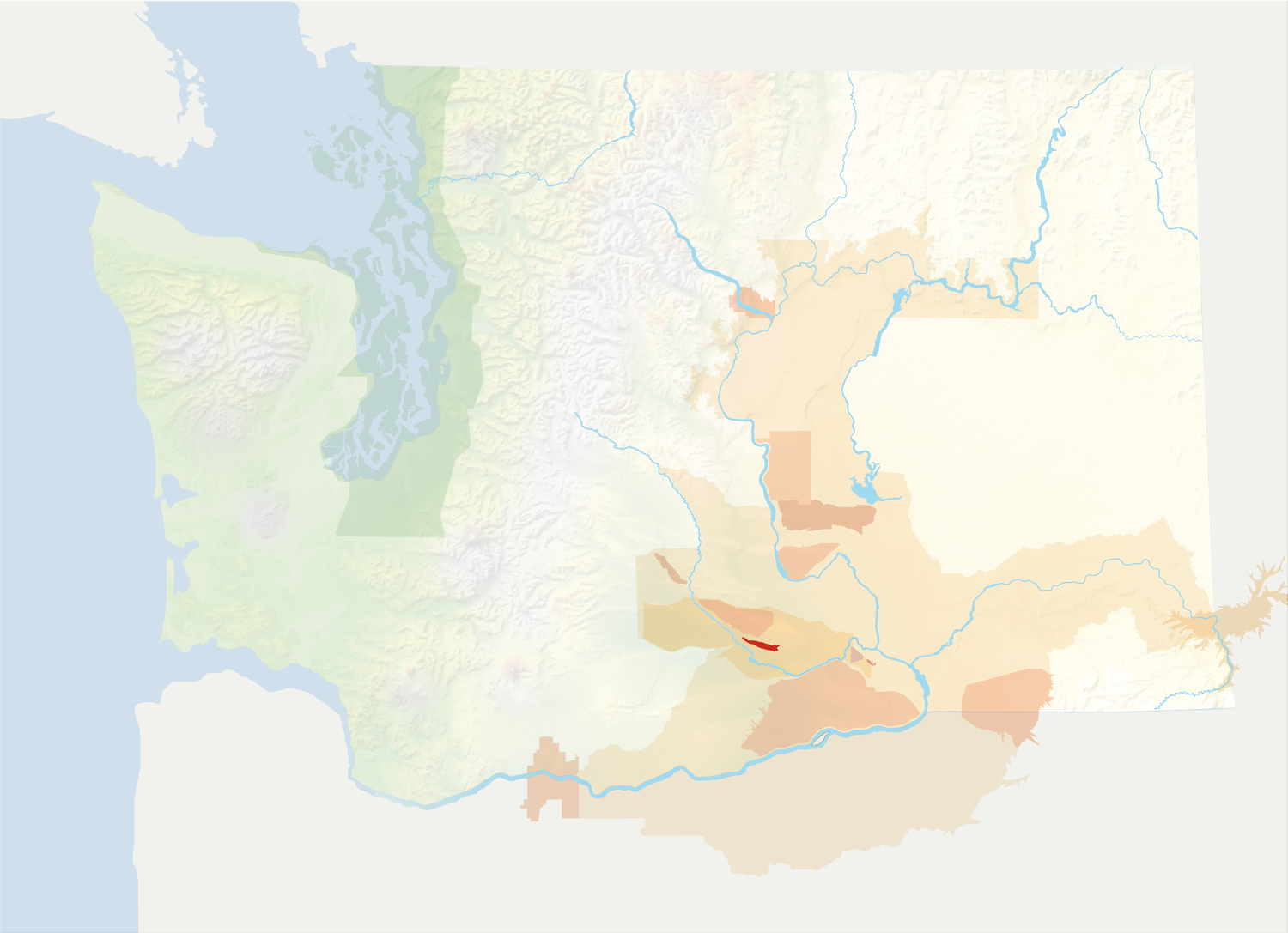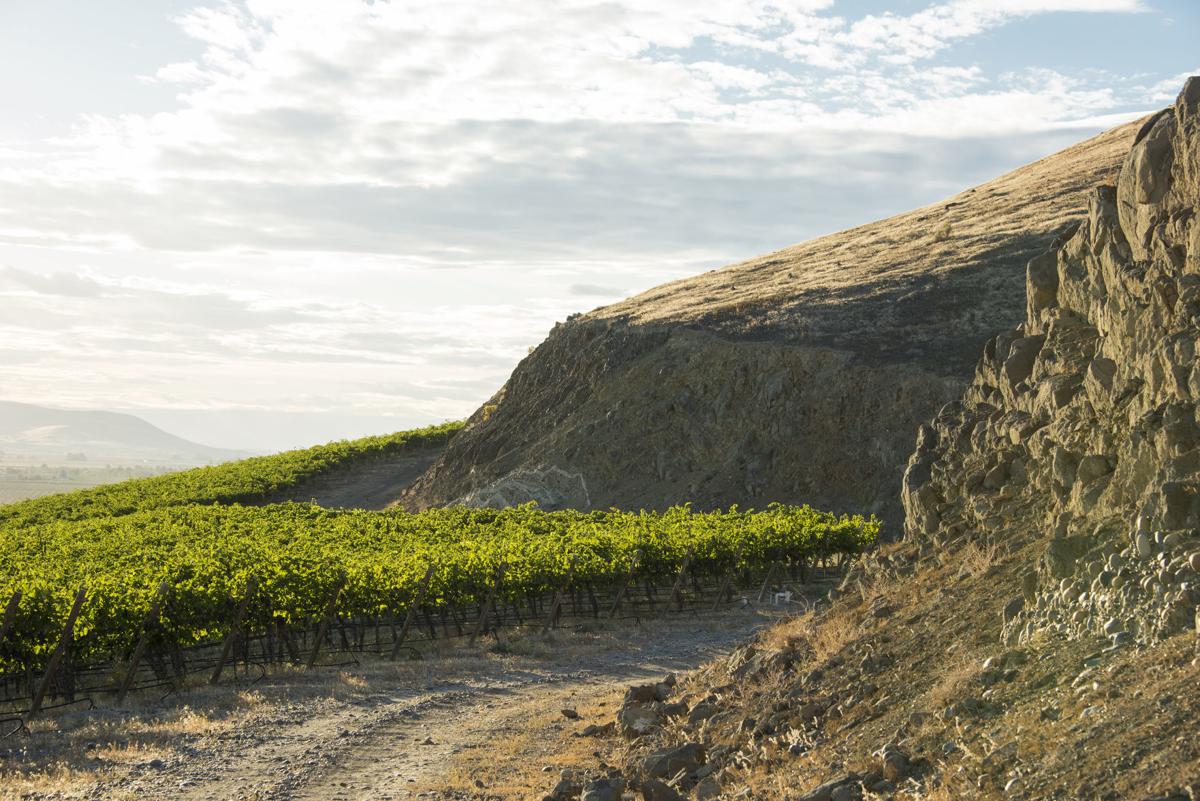Location: South-central Washington
Designated: 2009
Total Size: 4,145 acres
Acreage Under Vine: 859 acres (348 hectares)
Top Varieties: Chardonnay, Cabernet Sauvignon, Merlot
Soils: Loess over Missoula Flood sediment. Gravel deposits from ancient flow of Columbia River
Average Annual Precipitation: 7 inches
Two Things to Know:
- Snipes Mountain is home to some of the oldest plantings in the state.
- The appellation contains sand and gravel deposited by the ancestral Columbia River.
Snipes Mountain is located in south-central Washington between the towns of Sunnyside to the east and Granger to the west. It is a sub-appellation of Yakima Valley, which itself is a sub-appellation of the larger Columbia Valley.
Snipes Mountain gets its name from cattle rancher Ben Snipes, who built a home at the base of the mountain in the 1800s.
Snipes Mountain is less a mountain than it is an anticline of the Yakima Fold Belt, a series of geologic folds that define a number of viticultural regions in Washington. Steep north and south-facing slopes allow cold air to flow downhill, helping to prevent frost damage that occasionally affects nearby regions. These slopes also provide varied aspects for grape growing.

Some of the soils at Snipes Mountain come from an ancestral riverbed of the Columbia River. Many areas of the mountain are covered with fist- and melon-size cobblestones deposited by an ancient flow of the Columbia River. On top of this is loess—windblown deposits of sand, clay, and silt—over Missoula Flood sediment, with all but the top 90 feet of Snipes Mountain (1,290 feet above sea level) lying below this series of cataclysmic events.
Though the area only received appellation status in 2009, Snipes Mountain boasts a long viticultural history. Vineyards were first planted in the area in 1914. Muscat of Alexandria vines from 1917, planted by Washington State wine pioneer William B. Bridgman, were until recently still producing grapes. Harrison Hill, which is part of the appellation, is home to some of the state’s oldest Cabernet Sauvignon vines dating to 1963.

